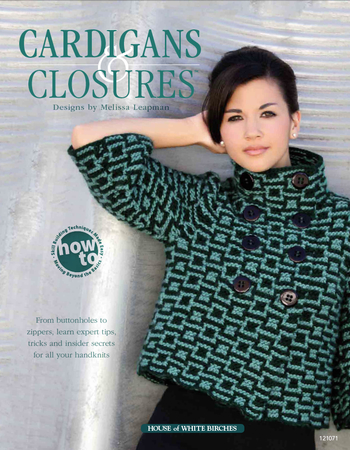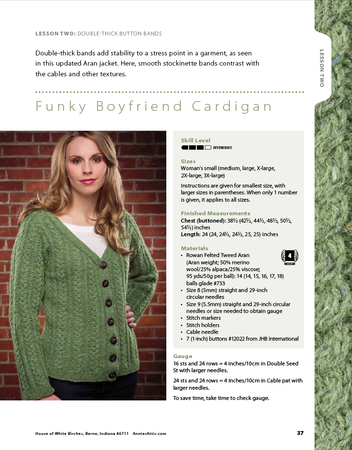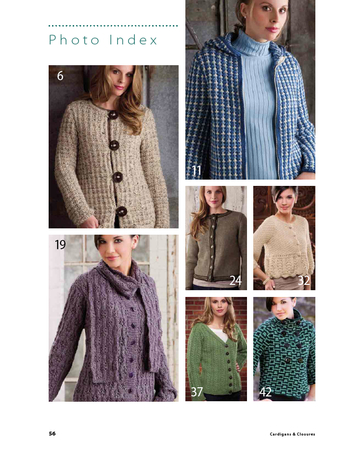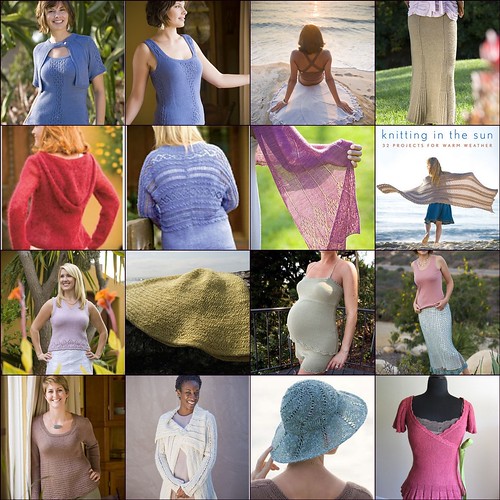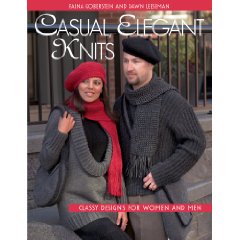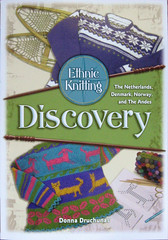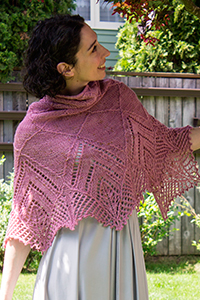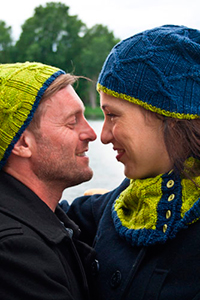I'm stop number four on Kate Atherley's blog tour for her new book, Beyond Knit and Purl. She's kindly agreed to do an interview with me and has offered up a free digital download of her book to one of my readers. If you'd like a chance at winning a copy, leave me a comment telling me about your most epic crafting or cooking disaster. Enter by 5:00AM April 19, 2012 and I'll draw one name at random.
Now on to the interview.
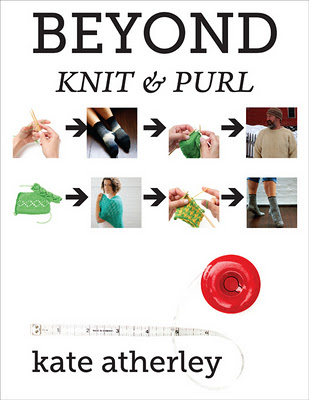
Marnie MacLean [MM]: Hi Kate, thank you so much for taking the time to do an interview with me.
Kate Atherley [KA]: Thrilled to talk to you!
MM: For my readers who may not be familiar with your work, can you tell us a little about yourself?
KA: I'm a teacher, a designer and a tech editor. I was born in the UK, but I live in Toronto. I'm lucky enough to live less than 2 blocks from my local yarn shop, Lettuce Knit. I studied mathematics at University, and worked in the IT industry for 15 years before becoming a full-time knit professional. When I'm not knitting, I can be found with my husband, walking our rescue hound-dog around our neighborhood, and drinking coffee.
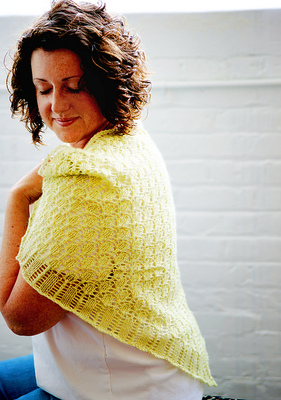
Top-Down Triangle Shawl: Spring Leaves by Kate Atherley
Photograph © Kristen Caldwell
MM: Can you tell us a little about your new book Beyond Knit and Purl and for whom it's intended?
KA: I've been teaching knitting for 10 years, and my most popular class is the Project Class. It's a multi-week workshop and knitters bring whatever they want to work on. Every month I meet knitter who have mastered the basics of working the knit and purl stitch, but are struggling to make the leap to working a pattern. My book is for those knitters, or for knitters who are looking to expand their skills and are seeking a way to learn about socks, lace, cables and colorwork. It's not just for new knitters: it's for any knitter who is looking to better understand the craft, the techniques and the patterns.
Learning to handle needles and yarn doesn't teach you anything about choosing or reading patterns - they are totally different skill sets. My book addresses that side of things. I've tried to capture all those things you need to know to be successful in knitting from a pattern - things that aren't typically written down. I've included a glossary to help understand how patterns are written, I've included an explanation of sizing, how to read a schematic, information on ease and tables of standard ease for different styles. I've got suggestions for specific project types based on skill level. I've got explanations on how to join a new ball of yarn, and lots of advice of choosing and substituting yarn.
MM: In my experience, designing simpler patterns can sometimes be even harder than designing involved patterns, as you really have to think like the knitter instead of running with your own whims. What sorts of goals did you set in designing the patterns in the book and what sorts of hurdles did you face?
KA: The objective was to design patterns that are simple to execute and yet build skills at the same time. Because the book is organized by "skills" - shaping, working in the round, socks, cables, lace and colorwork - I had a framework for the patterns - each pattern includes skills from a previous section, and one or two of the skills taught in that particular chapter.
The key is to remember what it's like to be new - to remember that knitter might not know how to weave in ends yet. I had to question everything about the patterns and the designs - would a knitter understand and know everything they need to know to work it? And if they might not, then it was up to me to teach the skill. For example, I have a top-down one piece baby sweater in the first set of patterns, and although the first version of the pattern had the sleeves worked in the round, I had to remind myself that knitters might not yet know how to do that, so I had to adjust the pattern to allow for the sleeves to be worked flat. And then, of course, I teach mattress stitch so that knitters can be confident about seaming the sleeves.
And I have a built-in test audience: the students in my classes. Many of the projects in my book come directly from these classes, and have been road-tested by knitters of all skill levels. If a pattern isn't successful, my students aren't shy about letting me know!
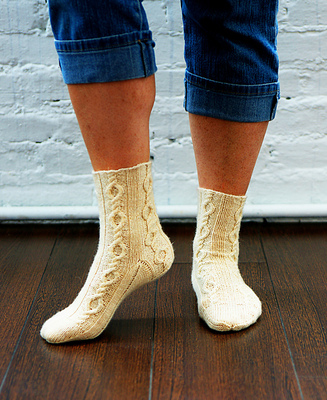
Classic Cabled Sock by Kate Atherley
Photograph © Kristen Caldwell
MM: When did you learn to knit and how long did it take to become a passion for you?
KA: My grandmother, Hilda, taught me to knit when I was a young girl - probably 5 or 6. I don't actually remember learning, it's just something I've always done! Although I knitted on and off through my childhood and teens, I didn't take it up seriously until I finished university and had some spare time on my hands. And it became a passion and a serious pursuit for me when I found the first edition Nancy Bush's Folk Socks. I loved the idea of making socks, but because I have pretty small feet I embarked on a journey to learn enough to modify the designs to make them fit.
MM: Was there anyone in particular that helped usher you into designing and teaching?
KA: Folk Socks is what pushed me into designing, although at first I was designing just for myself. I started teaching when the girlfriend of a co-worker opened a yarn shop, and she needed instructors. And I've never looked back! I am very grateful to Lorena for giving me that break!
MM: What has been your most epic knitting disaster?
KA: That's easy: the big green monster. Before I understood anything about gauge or ease or fit, I made a reckless yarn substitution. I worked a pattern for a cropped, slightly loose and boxy turtleneck sweater written for 18sts/4 inches in a bulky lime green mohair at about 14 sts/4 inches. It's still cropped but hilariously wide - about 50 inches around when it should have been 38 or so - and what should have been a turtleneck is a wide and short cowl. But I still have it - and I actually wear it! With a miniskirt, boots and a fitted turtleneck under it, it's a fun outfit for the coldest days of winter. Plus an excellent cautionary tale.
MM: Excluding glaring mistakes and omissions, what is your personal pattern peeve when working from someone else's patterns?
KA: It's a little thing, but I get pretty worked up about SSK. A common "definition" or explanation of SSK is given as "slip, slip, knit". I teach a lot of newer knitters, and if that's the description you give them, things are going to go horribly awry... There are so many ways of messing up SSK, and if we don't give a proper definition, we can't expect knitters to get it right! If I could change one thing about the way the world writes patterns, is that we stop spelling it out as "slip, slip, knit" and give a proper definition: "slip next 2 sts one-by-one as if to knit; insert tip of left needle from left to right into the fronts of these two sts and knit them together".
I'm also very disappointed by patterns for socks and mittens that are "one size fits all". The size of adult hands and feet can vary enormously: I have a US size 6 foot, and one of my best friends wears a size 11. The idea that the same size sock will fit us both comfortably is ridiculous! If we're going to go to the trouble of knitting socks, they should fit well.
MM: Is there anything that you particularly like to see in patterns, that is not necessarily the norm?
KA: The majority of sock and mittens patterns are prescriptive about needle configuration: 4 or 5 double-pointed needles, or magic loop, or 2 circulars. They don't need to be! After all, the basic construction is the same, it shouldn't matter what needles the knitter chooses to work with. We put knitters off if we're prescriptive: if you're only a magic looper, then you'll avoid all those patterns written specifically for DPNs. I love seeing patterns that are written generically, that work with any needle configuration. More options for knitters!
MM: You're going to be on an extended vacation, somewhere cool and isolated, with lots of alone time. What will you bring with you?
KA: My Signature 2.5mm DPNs and a huge collection of wild colors of self-striping sock yarn, and 5000 yds of laceweight and a bunch of Japanese stitch libraries!
MM: Back to your book, which pattern are you most pleased with and why?
KA: I must confess I love the houndstooth socks in the colorwork chapter. They look so much more difficult than they actually are!
MM: Are there any other patterns you'd like to make special note of in this book?
KA: Each chapter has a mini-project, to allow you to practice and build your skills. They're no more than an evening's work, using up scraps of yarn, so you can try something out without making a major commitment of time or money. There's a dishcloth, a lacy bookmark, a catnip-stuffed cat toy, a mini sock ornament, a coffee cup cozy and a phone cozy. These were a hoot to design, and I think they're just as much fun to knit. I also included a top-down one-piece construction baby sweater as it's such a popular type of project - and can be so very daunting to new knitters.
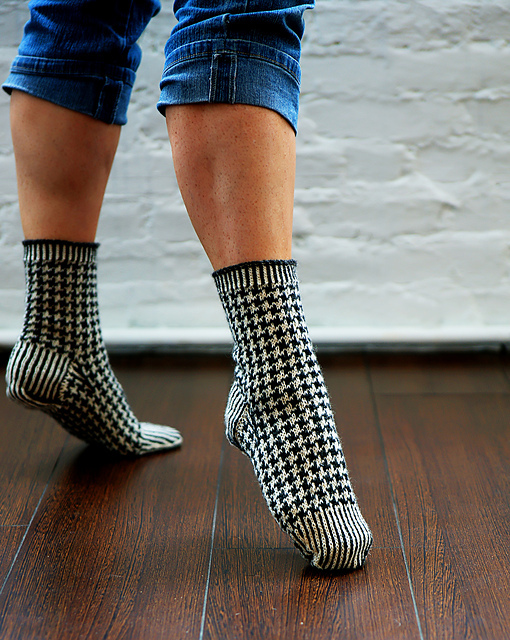
Houndstooth Sock by Kate Atherley
Photograph © Kristen Caldwell
MM: You got lots of great hints and tips from knitters, peppered throughout the book. Can you tell us a bit about why you talked to the people you did and what you think their input brings to the book?
KA: I talked to my friends, my colleagues and my students - both experts and new knitters. I wanted to capture those little bits of wisdom that don't normally get written done, the advice that you get when hanging around your local yarn shop. It was important to me to talk to new and "average" knitters, as their experiences and advice are most relevant to the readers of my book.
MM: Is there anything else you think people should know about this book?
KA: It's not just for newer knitters - even experienced knitters have told me that they've learned new things and had questions answered. For example, I explain what the big deal is about "twisting the round", and why I never worry about it until after my first round is complete because it can be fixed. Even my editor told me she didn't know that trick!
MM: Thank you again for taking the time to do this interview with me. I think it'll be a great resource for new knitters.
